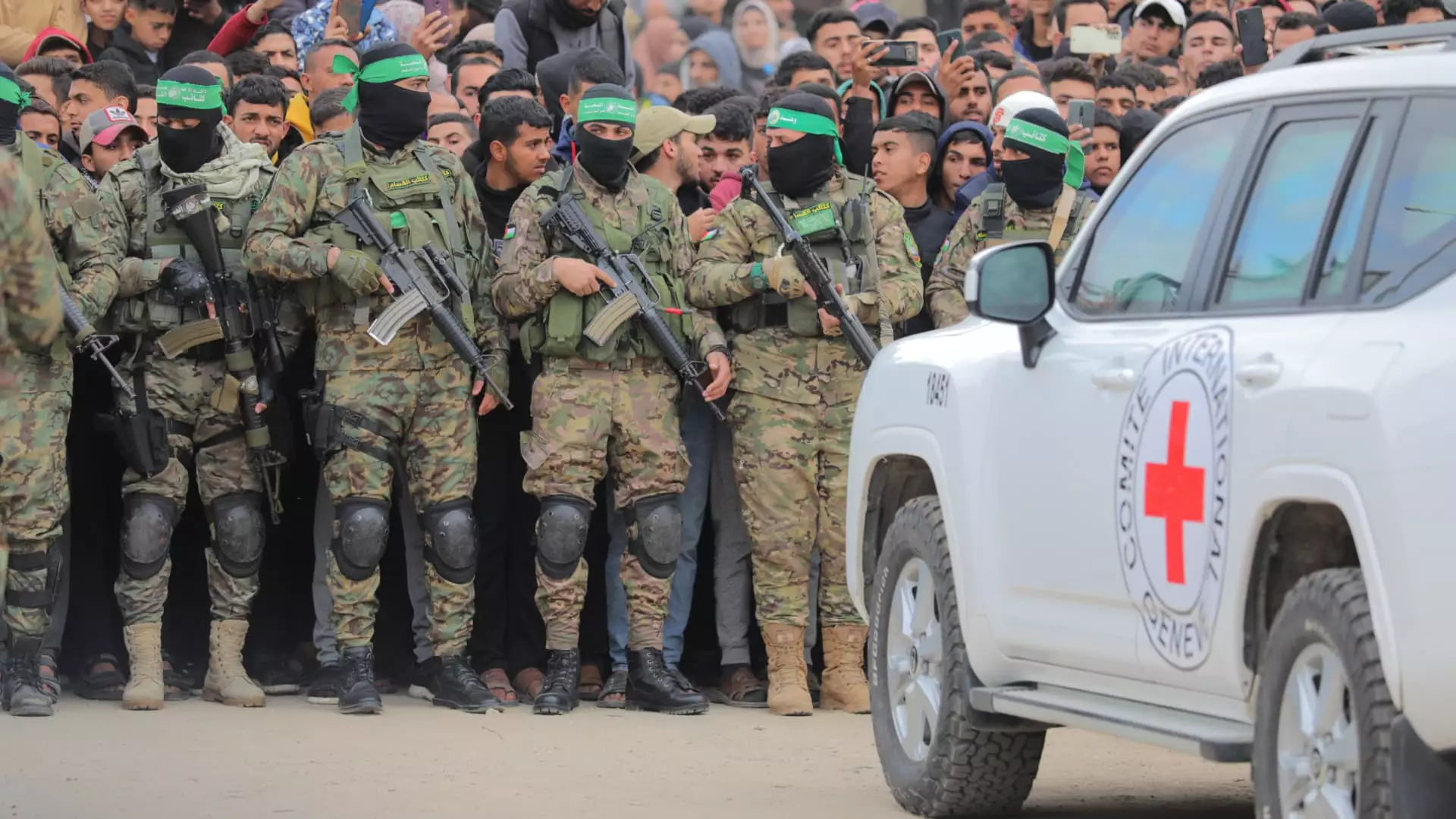On a recent Saturday, a significant event unfolded in the ever-tense landscape of the Israeli-Palestinian conflict when the militant group Hamas released three Israeli hostages. The footage of their handover, broadcasted live, was jarring: the men, weak and visibly emaciated, elicited a visceral reaction from the public and media in Israel. This latest development comes as part of a ceasefire agreement that seeks to mitigate a conflict that has persisted for more than 15 months, deeply affecting both Israelis and Palestinians.
Among those released were Ohad Ben Ami and Eli Sharabi, captured during a brutal cross-border raid on October 7, 2023, along with Or Levy, who was abducted from a music festival that day. Their physical deterioration was alarming—comments from family members revealed raw anguish at their condition. Michal Cohen, Ben Ami’s mother-in-law, described the sight of her loved one as akin to seeing a “skeleton,” underscoring the severe toll the captivity has taken on these individuals.
The handover ceremony in Deir al-Balah featured heavily armed Hamas militants, reminiscent of tactics designed to project dominance and control over the narrative surrounding the hostages’ return. This stark display painted a concerning picture of power dynamics, raising questions about the broader implications for civilians caught in the crossfire of political ordnance.
The hostages’ return was not simply a moment of joy but rather an occasion steeped in complicated emotions for their families. While reunification was a primary desire, many families were confronted with overwhelming grief and trauma. Sharabi’s family, for instance, suffered significant losses in the same attack that resulted in his abduction: his wife and two daughters were killed when Hamas militants invaded their home in Kibbutz Be’eri. The juxtaposition of relief at his return against the backdrop of profound loss complicates the narrative surrounding these exchanges.
Moreover, the exchange itself highlighted the significant gamble involved in the negotiations, as Israel has agreed to release 183 Palestinian prisoners, with several individuals having been convicted for serious crimes, including acts resulting in fatalities. This trade-off raises significant moral and ethical dilemmas: are the lives of hostages worth the potential harm returned to the public through the release of dangerous individuals? The decision becomes thorny as both public opinion and national safety come into play.
The current hostages-for-prisoners deal is part of a larger, fragile ceasefire agreement that has been underpinned by U.S. involvement and mediation efforts from other nations, notably Egypt and Qatar. However, its longevity remains uncertain. The specter of renewed violence looms large, particularly in light of recent statements from political leaders that have raised concerns about ethnic displacement and the future of Gaza itself.
U.S. President Donald Trump’s suggestion to relocate Palestinians from Gaza and transform the region into a “Riviera of the Middle East” met with harsh criticism. Opponents argued that such proposals amount to ethnic cleansing, revealing deep-seated mistrust and fear within Palestinian communities. Although Israeli Prime Minister Benjamin Netanyahu welcomed the suggestion, tensions simmer as both sides grapple with how to coexist.
As negotiations for subsequent phases of the ceasefire progress, the world watches closely. The agreement envisions the release of 33 Israeli children and vulnerable individuals in return for almost 2,000 Palestinian prisoners. However, the prospect of fulfilling these goals requires careful diplomacy and an earnest commitment to long-term peace, a difficult endeavor considering the recent history of violence.
The Human Cost of War
The hostage situation in Gaza is emblematic of the human cost of ongoing warfare. The initial attack on October 7, which resulted in the deaths of approximately 1,200 Israelis and led to a brutal Israeli military response, has culminated in an alarming death toll among Palestinians, with estimates exceeding 47,000 lives lost, according to health authorities in Gaza. This grim reality serves as a reminder of the urgent need for resolution, one that prioritizes the humanity of those caught on both sides of this drawn-out conflict.
Exchanges like these are not mere transactions; they are laden with emotional, ethical, and strategic implications. As the ceasefire continues, hope intermingles with fear about the fragility of peace in a region scarred by decades of conflict. Each life lost and every hostage returned becomes part of a larger tapestry of suffering and longing for stability—a narrative that exceeds the political machinations at play.


Leave a Reply